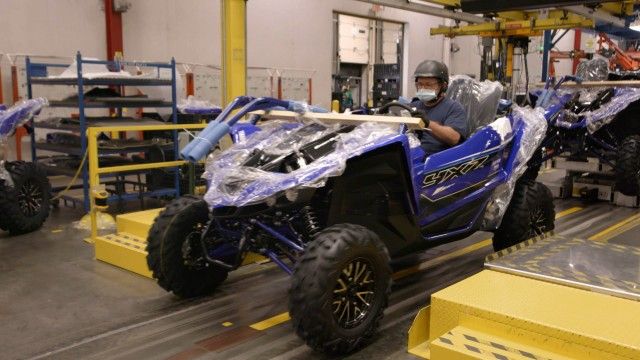The WORST episodes of Modern Marvels
Every episode of Modern Marvels ever, ranked from worst to best by thousands of votes from fans of the show. The worst episodes of Modern Marvels!
Celebrating ingenuity, invention and imagination brought to life on a grand scale, MODERN MARVELS tells the fascinating stories of the doers, dreamers and sometime-schemers who created everyday items, technological breakthroughs and man-made wonders.
#1 - HMS Victory
Season 12 - Episode 23 - Aired 5/26/2005
The HMS Victory would play a crucial role in the foremost naval engagement in 19th century maritime history, the battle of Trafalgar. This victory was so decisive that no fleet challenged Britain's Royal Navy for more than one hundred years. Built with enough wood to cover the Empire State Building one and a half times, propelled by wind and firing solid shots from smooth bored muzzle-loading canons, ships like HMS Victory ruled the waves for over two centuries. Manned by a crew of 850 and capable of firing one and a half tons of iron shot in a single devastating broadside, these eighteenth century floating fortresses were as complex and sophisticated in their day as a nuclear-powered aircraft carrier is today. Using color re-enactments and the actual recollections of those who fought on board, this profile goes below the decks of the famous warship.
#2 - Cruise Ships
Season 1 - Episode 6 - Aired 3/11/1994
The Industrial Revolution gave birth to great steam ships like the Titanic and the Queen Mary. Mammoth monuments in steel have been adapted to serve a modern world, and remain among the most incredible feats of engineering ever conceived.
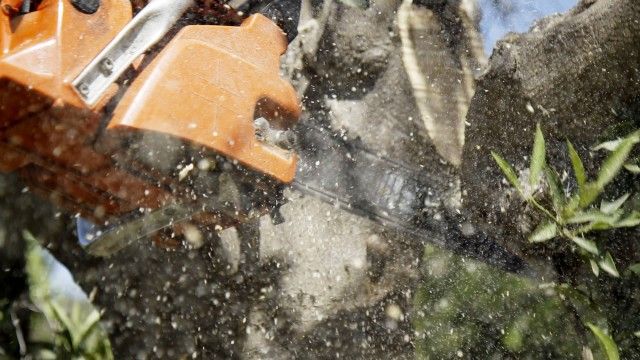
#3 - Power Tools
Season 21 - Episode 12 - Aired 8/15/2021
Adam Richman visits power tool manufacturing “mecca” Dewalt, where he discovers how they’re using cutting edge technology to make cutting edge tools. Then, he goes back in time to uncover how one of America’s oldest power tools is still cutting! Next, it’s time to recharge as he finds out how power tools have changed the world, from the outer reaches of space to deep under the ocean, to pit crews racing cars and rescue teams racing time.
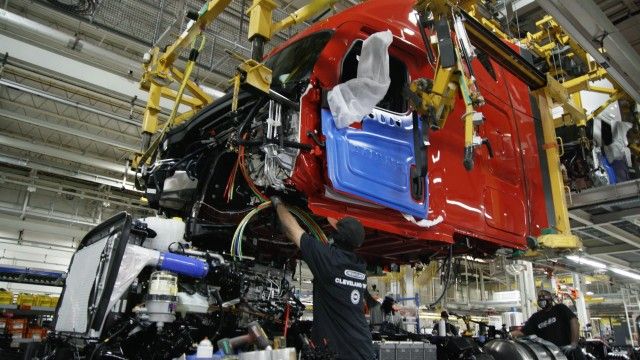
#4 - Moving America
Season 21 - Episode 11 - Aired 8/8/2021
Adam Richman explores how a legendary long-hauler meticulously custom-builds each truck at Daimler.
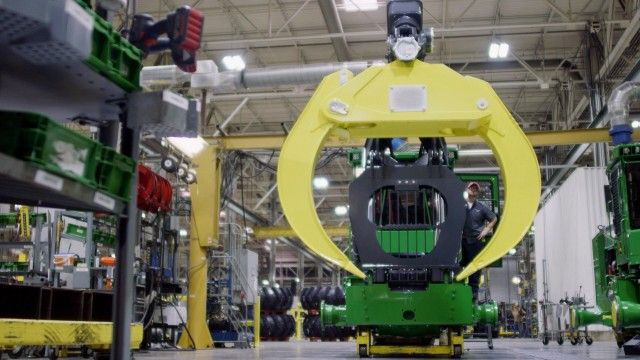
#5 - Heavy Machinery
Season 21 - Episode 10 - Aired 8/1/2021
#7 - Million Dollar Guns
Season 10 - Episode 7 - Aired 2/19/2003
Topic: valuable firearms. Included: Hitler's gold pocket pistol; Catherine the Great's pistols.
#8 - Line of Defense
Season 7 - Episode 41 - Aired 12/19/2000
Fortification evolved as man tried to defend his territory from attack. From fenced-in hills to walled cities to impenetrable forts, strongholds of the past echo the history of battles for territorial control.
#9 - The Camera
Season 3 - Episode 12 - Aired 12/15/1996
The history of photography and the camera from it's humble beginnings through the digital age.

#10 - The Exterminator
Season 10 - Episode 26 - Aired 6/3/2003
They have been here for longer than us, and there are many, many more of them. They buzz, skitter and fly, chew, gnaw and occasionally draw blood. Lumped under the broad category of pests and vermin, they are one of the constant enemies in man's battle to maintain dominion over house and home. And the strongest weapon we have is THE EXTERMINATOR.
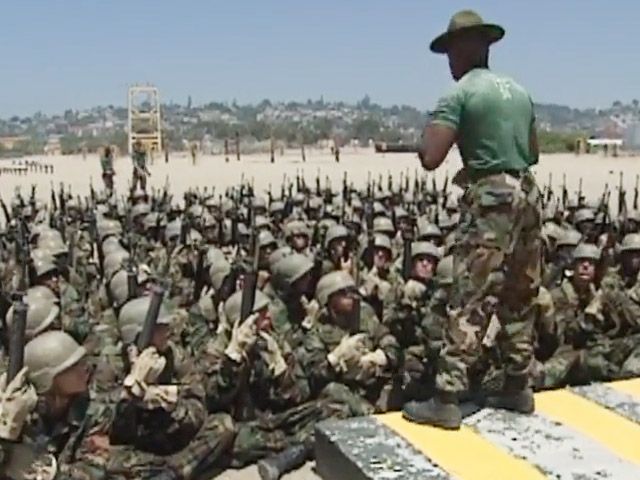
#11 - Combat Training
Season 7 - Episode 36 - Aired 11/6/2000
Sign up at the ultimate survival school, where soldiers learn to kill or be killed. We follow combat training throughout history, reviewing survival skills and psychological tools--from ancient Rome to World Wars One and Two--and learn how modern training is enhanced by advanced technology and computer simulation.
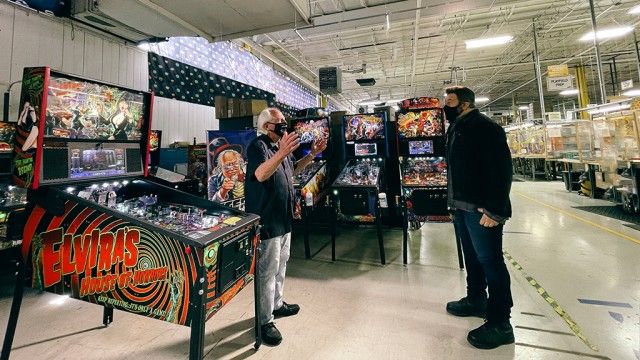
#12 - Classic Toys
Season 21 - Episode 13 - Aired 11/28/2021
Adam's not playing around, he's working hard to find out how some toys transform into valuable collectibles and become iconic classics. Adam gets VIP access to see how Play-Doh is created, and how every can gets that amazing smell. Plus, he visits the mecca of pinball manufacturing to see how their pinball machines have outlasted the competition and even the law! Then, how have Slinkys kept springing back? And, an inside look at how Lionel trains keep chugging.

#13 - Drive-Thru
Season 8 - Episode 42 - Aired 11/27/2001
Join us for a ride through the history of car-culture commerce. We chronicle the birth of the first drive-in restaurants that paved the way for a billion-dollar fast-food dynasty, and feature many lesser-known drive-thru venues, such as dry cleaners, flu-shot clinics, liquor stands, and drug stores.

#14 - The St. Louis Arch
Season 8 - Episode 47 - Aired 12/11/2001
It is a majestic structure that rises boldly over the Mississippi River--40,000 tons of steel and concrete that create the biggest arch of its kind in the world. We'll see how its simple and elegant form results from remarkable achievements in construction and engineering.
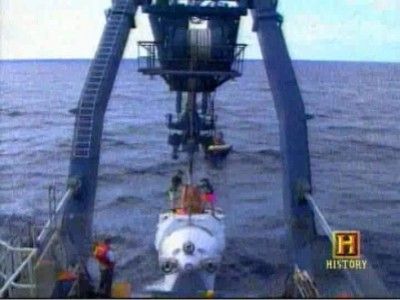
#15 - Deep Sea Exploration: Challenging the Abyss
Season 4 - Episode 19 - Aired 11/3/1997
Chronicling the development of deep-sea exploration and the vessels and devices that make it possible. Also: some of the revolutionary findings that have resulted from marine exploration.

#16 - The Panama Canal
Season 1 - Episode 5 - Aired 3/4/1994
Part of Teddy Roosevelt’s dream of making America a global power was realized through the construction of the Panama Canal.
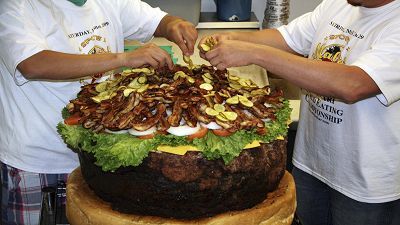
#17 - Supersized Food
Season 16 - Episode 26 - Aired 11/5/2010
The US has become the culture of BIG--just look at the importance of size and how it has been infused into the lifestyle we choose to live, whether it's our homes, our appliances such as large screen TVs or even eccentric stretch limos. But big has also affected what we eat. This episode explores America's growing obsession with plus-sized meals and how we cook them! Discover the largest everyday offerings of gargantuan portions--from the biggest stacked burger in the world (at almost 250 pounds), a plus-sized Sicilian pizza that feeds almost 75 people, a 72-ounce steak no real cowboy can resist, and the seven-pound hot dog that's too big for a bun. Top it all off with a giant cupcake, humongous cinnamon roll or a five pound gummy bear... and chase it down with a monster bottle of beer that holds over 101 ounces of brew.

#18 - Coin Operated II
Season 16 - Episode 27 - Aired 11/12/2010
Tens of millions of them all over the world--soda and snack machines, parking meters and payphones, video games and vending machines... and they all use coins--but for how long? Examine the historic one-armed bandits and the 21st century, cutting edge, computerized slot machines that occupy Vegas casinos and get an exclusive look at their inner workings in a never-before-seen factory in Reno, Nevada. Search out some of the wackiest, strangest vending machines on the planet that sell everything from bottles of wine to dog washes. Get a close-up look at the famous binoculars located at popular tourist sites around the world, as well as a unique company that collects and cleans the coins thrown into fountains for good luck. But it all starts and ends in the historic halls of the U.S. Mint, where coins are made and destroyed. Will coins one day become obsolete?

#19 - Convenience Stores
Season 17 - Episode 15 - Aired 12/26/2011
160 million Americans visit a convenience store every day. Why? Because it's fast. But what you probably didn't know is how every detail of its design has been engineered to work that way. Step inside one of the busiest 7-11's in America and find out what makes it tick. And go behind the scenes to see how favorite innovations--like slurpees, turbo ovens, and beef jerky--are made. The science of convenience will amaze you!

#20 - Top Toys and Games
Season 21 - Episode 14 - Aired 12/5/2021
Adam Richman visits the legendary factory where one of the most popular board games of all time is made: Monopoly! Then he finds out how Masters of the Universe action figures are making a comeback in a big way. Plus, see how Mattel is using the latest technology to make new models of Hot Wheels come to life.
#21 - The Tennessee Valley Authority
Season 2 - Episode 11 - Aired 10/15/1995
America was in the throes of the Great Depression, and rural America was on the brink of disaster. Franklin Delano Roosevelt tried many federal interventions to steady the shaky economic course, and none succeeded more spectacularly than the creation of the Tennessee Valley Authority.
#22 - Oil
Season 2 - Episode 13 - Aired 11/9/1995
From the first well in Pennsylvania to the gushing Spindletop and modern supertankers, the story of oil is the story of civilization as we know it. We’ll take a look at the ingenious and outrageous men who risked everything for “black gold” and unimaginable wealth.
#23 - Brooklyn Bridge
Season 2 - Episode 10 - Aired 10/1/1995
First-hand accounts and extensive archival footage bring the struggle to create the world's first suspension bridge to life.
#24 - World of Wood
Season 23 - Episode 1 - Aired 9/22/2024
From sailboats to airplanes, wagon wheels to charcoal, Modern Marvels explores all the historical, modern and timeless ways we can't live without wood.
#25 - Amazing Aluminum
Season 23 - Episode 2 - Aired 9/22/2024
It's time to take a shine to one of the most important metals on earth--aluminum! From mirrors and foils to baseball bats snd jumbo jets, Modern Marvels looks at the lightweight, flexible, rust-proof wonder.
